How To Date Your Antique Coffee Grinder
by Bryan Albuquerque
If you are in possession of an antique coffee grinder, you may be wondering exactly how old it is.
Maybe it’s out of sheer curiosity, or maybe you wish to assess its value, as some old coffee grinders can fetch a tidy sum of $100 or higher.
It is even possible your grinder might be so much of a find that it belongs in a museum, and could be worth even more, both fiscally and historically.
So how do we assess a coffee grinders’ date?
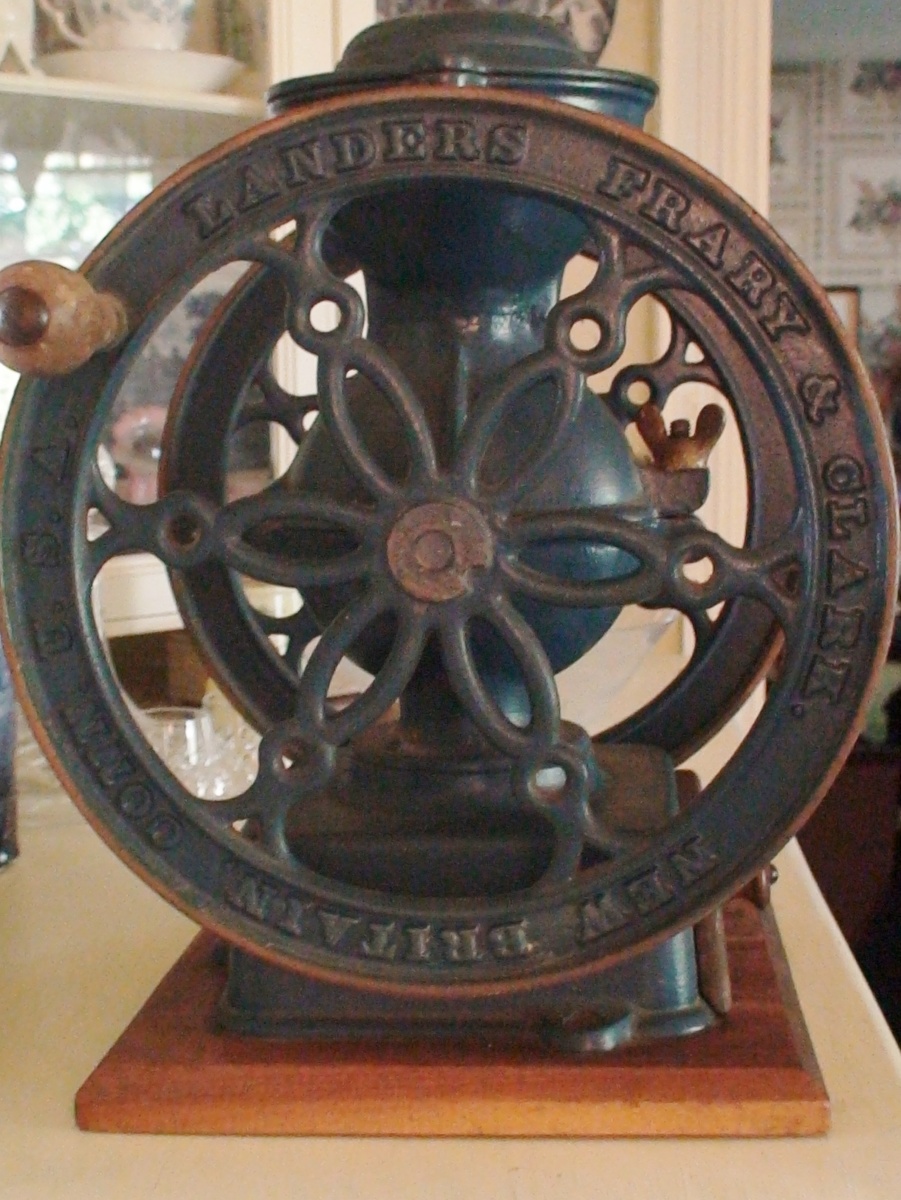
When assessing a coffee grinders’ age to an exact year, you should understand that this may not be an easy task, as there have been many, many makes and models of coffee grinder produced all around the world, designed in all manner of styles, and made from all different types of material from wood, to cast iron, to brass, or even porcelain.
These materials do give us some idea of when and where the coffee grinder may have come from, but in order to know for sure, we might like to have some familiarity with the overall history of coffee grinders, as well as the evolution of coffee grinders over time in terms of how they function and why they function the way they do.
We should also be aware of the possibility that our coffee grinder may not even strictly be a coffee grinder, as there are other types of food grinders out there, like spice grinders, or pepper mills, that might look very similar to a coffee grinder.
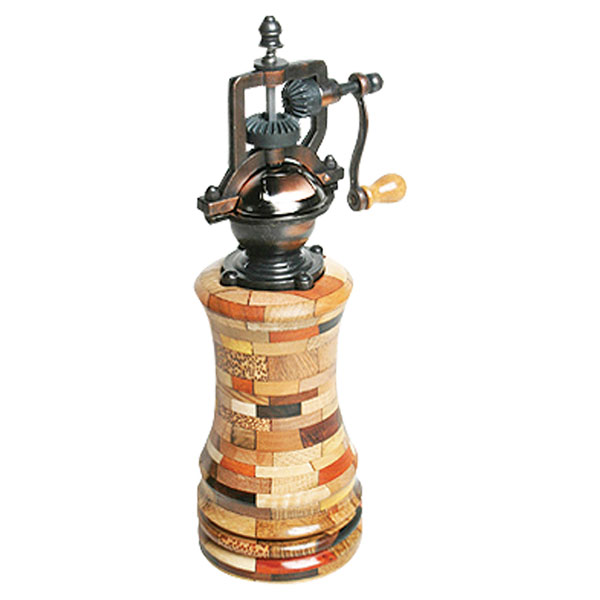
Keeping that in mind, here are some names of coffee grinder manufacturers to take note of from the past 200 years or so from the U.S.A.:
- Arcade
- Enterprise
- Landers Frary and Clark
- Logan and Stonebridge
- Parker
- Steinfeld
- Wilmot Castle
- Wrightsville Hardware Company
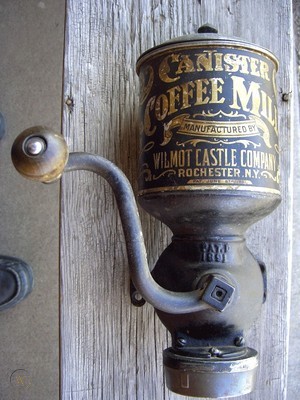
Be sure to look for these names on your grinder somewhere. Also, here are some models you may see from throughout Europe over roughly the same time period:
- Armin Trosser – German
- DeVe – Holland
- Elma – Spain
- Kenrick – England
- PeDe (Peter Dienes) – German company as coffee is spelled kaffee
- PeDe (Peter Dienes – Holland company as coffee is spelled koffie
- Patentado – Basque area of Spain by the M.S.F. Company
- Spong – England

In addition to these names, there are more manufacturers besides these, and this is why it takes antique dealers sometimes their entire lives to become familiar enough with one particular type of item, such as a coffee grinder, enough to know how to solve conclusively the mystery of its origins.
With coffee grinders dating back thousands of years to Ethiopia in the 9th century, when they used a mortar and pestle to grind the roasted beans up, there have been many iterations of coffee grinders over the centuries, around the world.
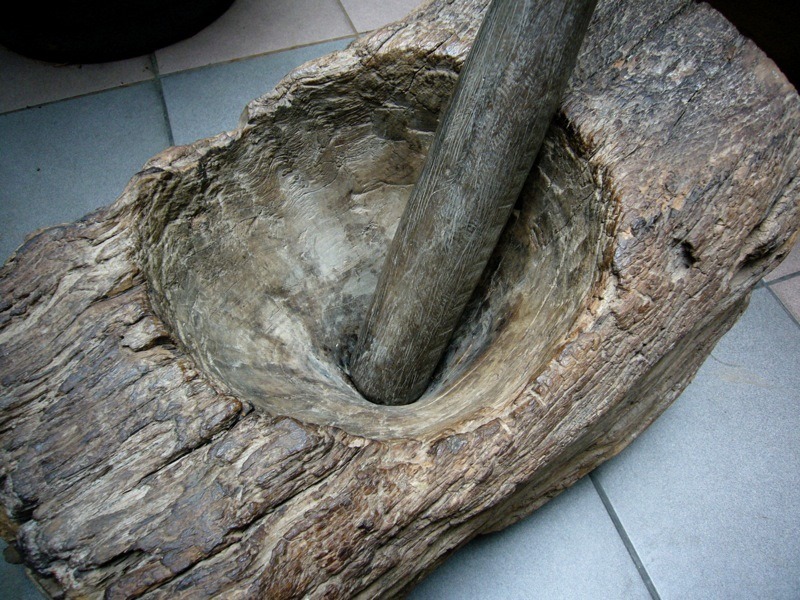
As far as the original mortar and pestle type of coffee grinder, it is highly doubtful you will come across one of these ancient types unless you are in the field of archeology.
Best Method – Check for Make / Model listed on the grinder
Now, as to the coffee grinder that you presumably are gazing upon while reading this article, the first thing you can do to date your coffee grinder is to look for things like names that may appear on it, model numbers, and especially the DATE, or any sort of inscription that you can find on it anywhere. If you fin the date – bingo – you’ve got it!
Many coffee grinders made in the last 200 years likely will have some sort of make or model number on them, to give you a clue as to their origins. Once you have a make or a model number, this is a great start to finding out how old it is.
Here, for example, is an old wooden box grinder mill with some decorated components, made from what appears to be iron, with a knobby wooden handle and some lovely old wood appeal, including a drawer at the bottom where the grinds are collected. Chances are it still works and can still grind coffee. Now that’s quality!
At a glance, we can see some writing on the front.
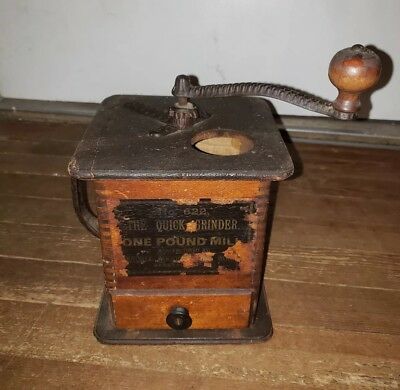
Upon closer inspection, we can see that this is a Waddell Company coffee grinder, cleverly dubbed “The Quick Grinder”, with a “622″ also marked on it.
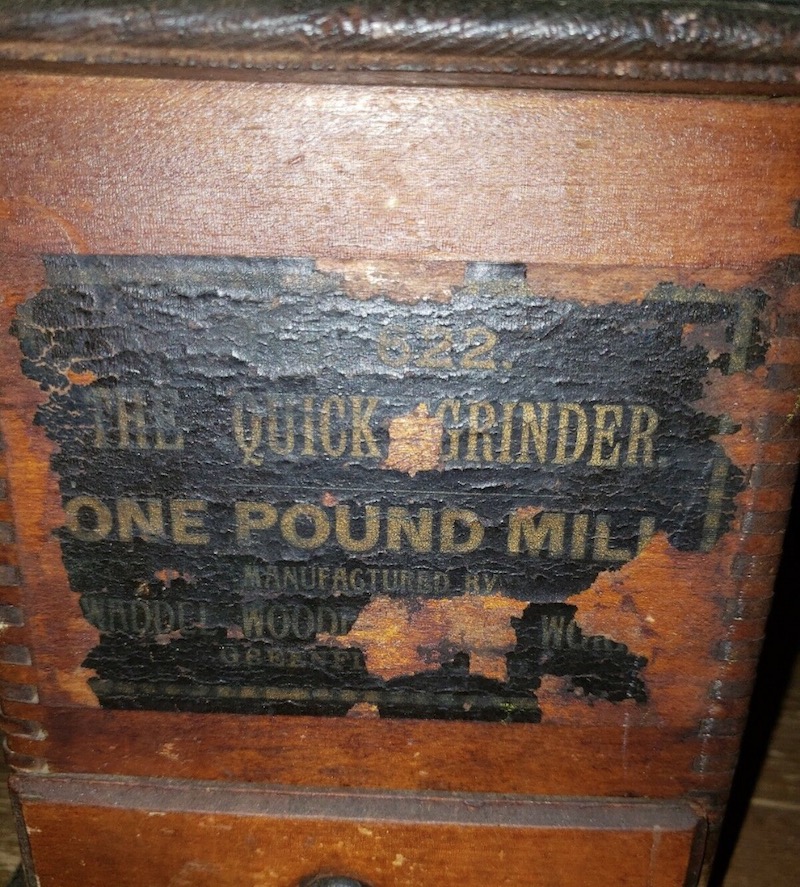
From here, it is up to the owner to determine what can be done to learn the coffee grinders’ date.
Options include – you can take it to someone who is an expert in antiques, you can go to the library and dig through books on the topic, or you can do what you did to find this very article you’re reading now, and “Google” it.
In this particular case, we know from reading up on some historical online archives about the Waddel Company, that this is a late 19th century piece, probably dating to somewhere around 1900. We’ve seen this very model fetch about $50 USD on an online marketplace.
Now, perhaps your grinder has no such markings that would indicate who made your presumably vintage coffee grinder. What do to, then?
What does the style tell us?
Let’s say you came across this vintage coffee grinder in your grandmother’s attic. Note the style, and the brass construction. Hmm…

Now, our question to you would be, is there a Middle Eastern connection in your family? Because this coffee grinder certainly would appear to have that type of origin, as it matches the look and build of many a Turkish coffee mill that we’ve seen.
If you read our article called “Coffee Grinder History“, you will know that Turkey is a big part of the origin of coffee grinders, as coffee is a huge part of their culture.
It’s a fact that Turks have been crafting coffee grinders of this type for many centuries, beautifully hand-crafted and sturdily constructed, dating back to the 15th century.
So, might we safely assume that this coffee grinder might be that old? Could it be? There is no sign of any name or model number that we can see on the above picture. How likely is it that this brass coffee mill dates back to the Battle of Marj Dabiq?
Before we go ahead and assume that this is a 500 year old coffee grinder, there are a few things to consider. If you’ve read our “Best Turkish Coffee Mills” article, you can see that even modern Turkish coffee grinders adhere to the old style that they’ve had for centuries.
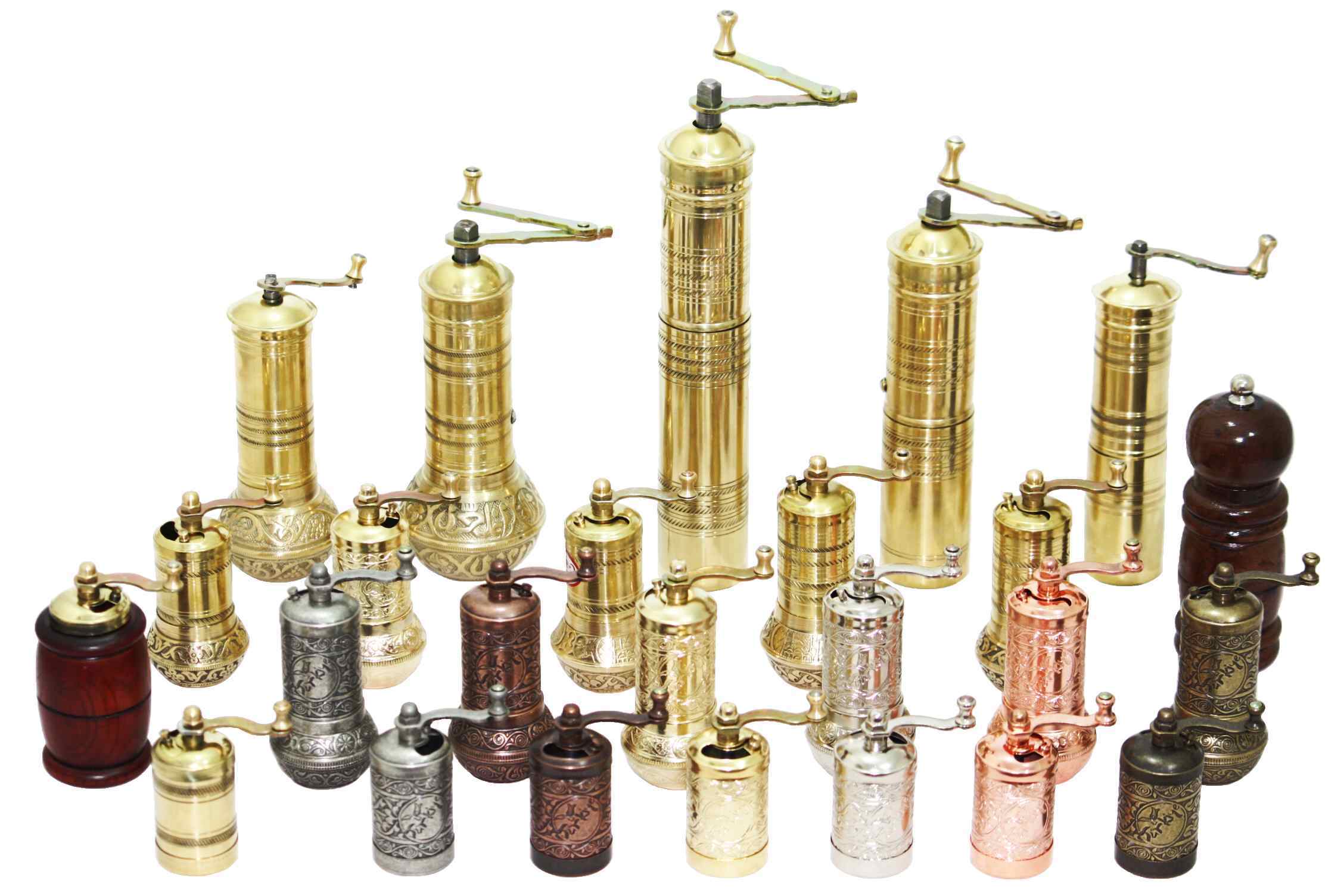
People from all over the world, to this day, love a coffee grinder that features the beautiful hand-crafted qualities and brass make that the Turks of centuries past held dear, and so even the new models often look just like the old models. This doesn’t really help with the dating process, does it?
When it comes to old, brass coffee grinders that look somewhat Middle Eastern, you would really need to go that extra mile to prove that the grinder itself is truly an antique.
Your best bet would be to find someone who specializes in antiques from that part of the world, and see what they have to say, because, without any features that can directly point to a time or place of origin, you are simply guessing as to the date of said item.
Antique or Not?
This does bring up a good point when it comes to antiques, that unless there is proof that your item is an antique, there is always a chance that it isn’t.
When you take into consideration that many manufacturers still to this day like the antique “look” of certain products, and will go out of their way to emulate it, and then you consider that, like the world of fine art copycats, there are actually “fake” antiques out there, the onus is on the seller to prove that their item is a true collectible.
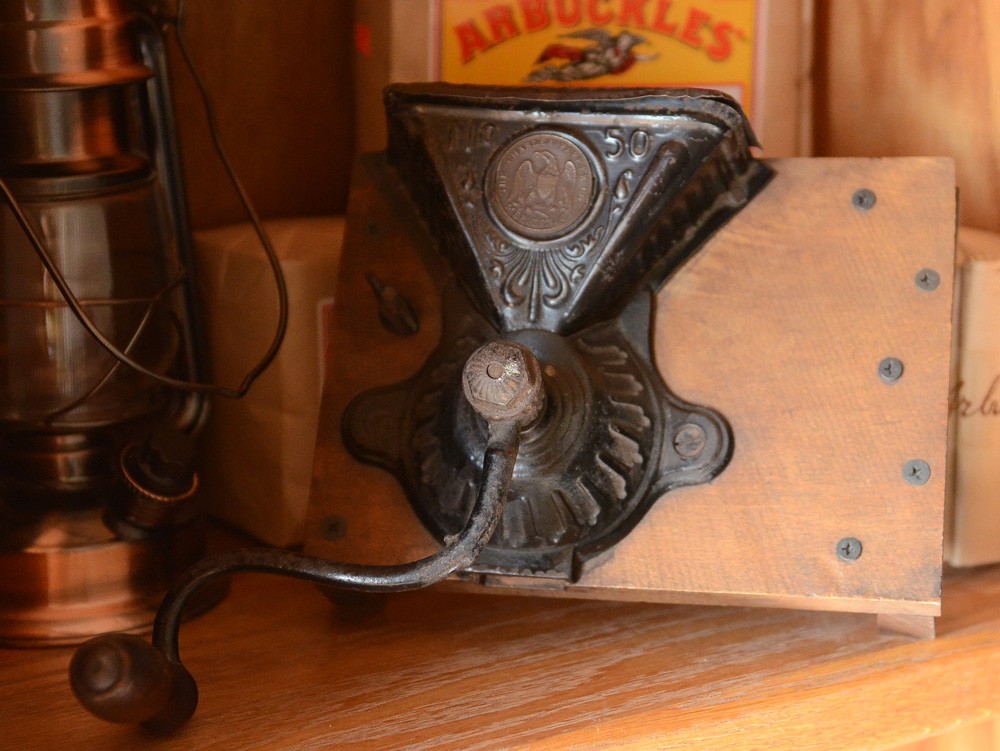
At the same time, if you’re reading this, this isn’t to say your coffee grinder is not an antique. It certainly may be, and it is more likely than not that if you came by this coffee grinder honestly, and it would appear to be old, it probably is.
What have we learned?
While dating your coffee grinder might be difficult, most of the time, it’s not that difficult.
For instance, if your coffee grinder has the manufacturer’s name on it, you are in luck, and it shouldn’t be that hard to date with a bit of research into who that manufacturer is or was, and where they came from, and when they were operating.
Fortunately, coffee grinder manufacturers just love to put their name and logo right on the grinder. It’s rarer that a coffee grinder has no such label, than to have a label. We have the human ego to thank for this!
From this point, it’s a hop, skip, and a jump to the rough date of your coffee grinder, and then eventually to the exact date.
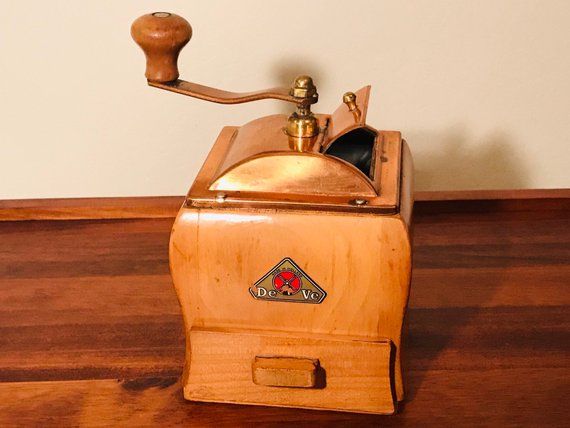
Beyond labels found right on the product, or access to a very knowledgeable antique coffee grinder expert who can tell you something significant offhand, your job of dating your coffee grinder then gets exponentially harder, but maybe not impossible.
Certain styles of coffee grinder would suggest certain geographical points of origin, and certain dates.
Even a certain type of wood, or a particular shape, or some sort of embellishment might give away the origin of your coffee grinder, but it would be up to you as the person who possesses this item to look into it to an extent where a conclusive answer may be reached.
All in all, there’s no magic formula for determining the age of a coffee grinder. It is as simple as looking for clues on the grinder itself, and, beyond that, it requires a fair amount of deductive reasoning. Let us know if you have any stories about antique coffee grinders in the comments below, and how you managed to date yours, if you were able to do so!
 |
 |
 |
 |

About Bryan Albuquerque
Bryan Albuquerque is a coffee lover and vaping advocate who writes reviews and information about coffee accessories and KYG. A former coffee addict, Bryan traded his morning fix for an electronic cigarette in an effort to quit smoking, and has never looked back. He's dedicated to helping others make the switch to vaping, and believes that it's one of the best decisions anyone can make for their health.
Thoughts on "How To Date Your Antique Coffee Grinder"
 |
 |
 |
 |
Get FREE Coffee Gifts now. Or latest free grinders from our best collections.
Disable Ad block to get all the secrets. Once done, hit any button below
 |
 |
 |
 |